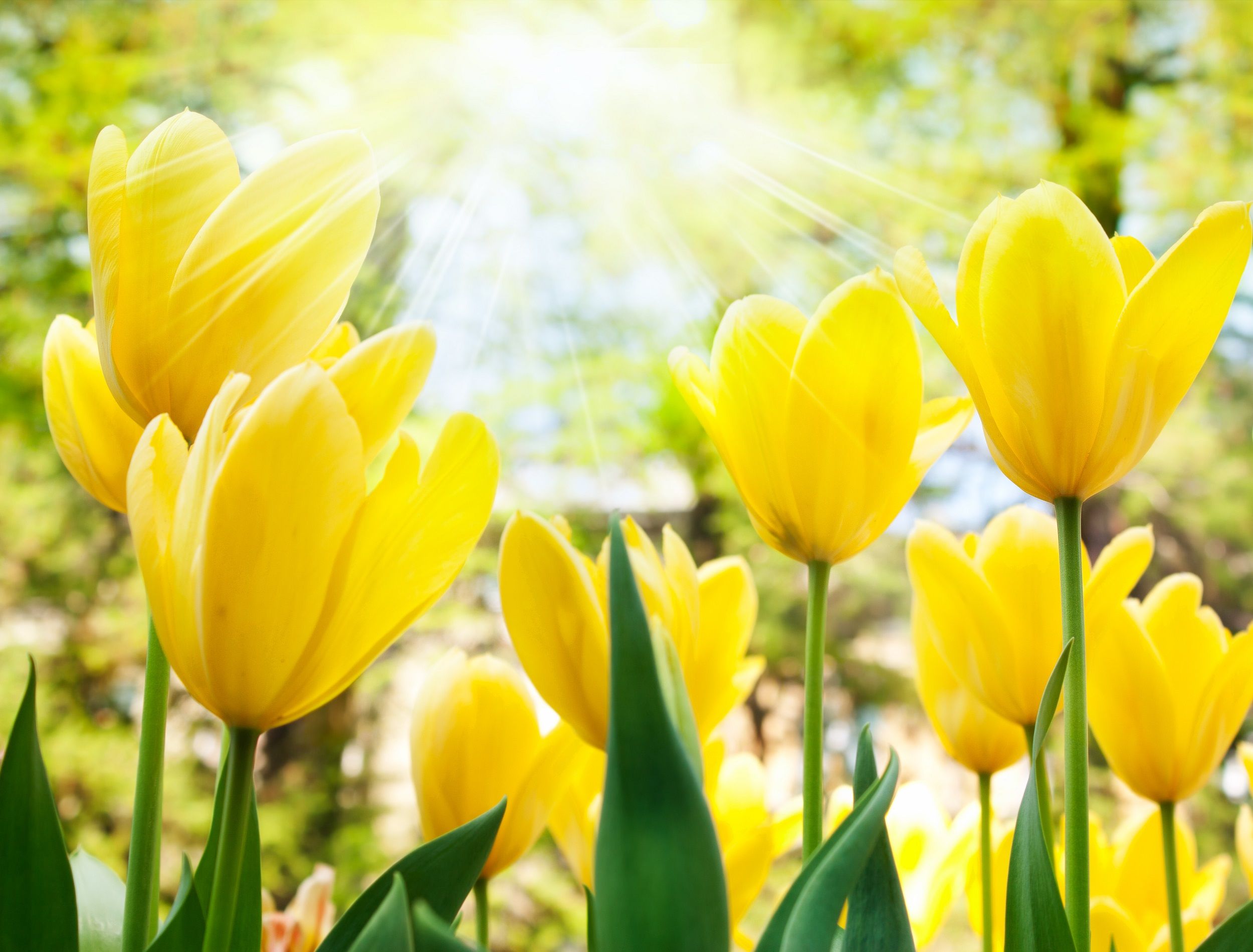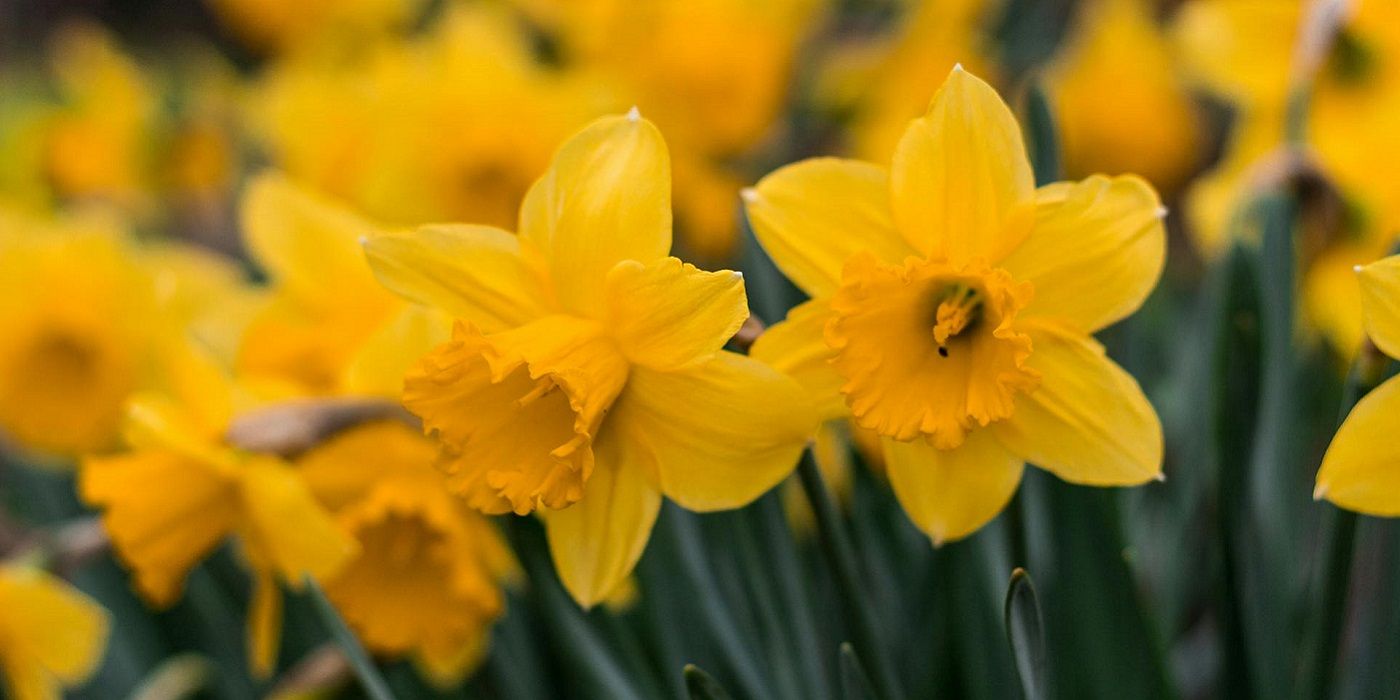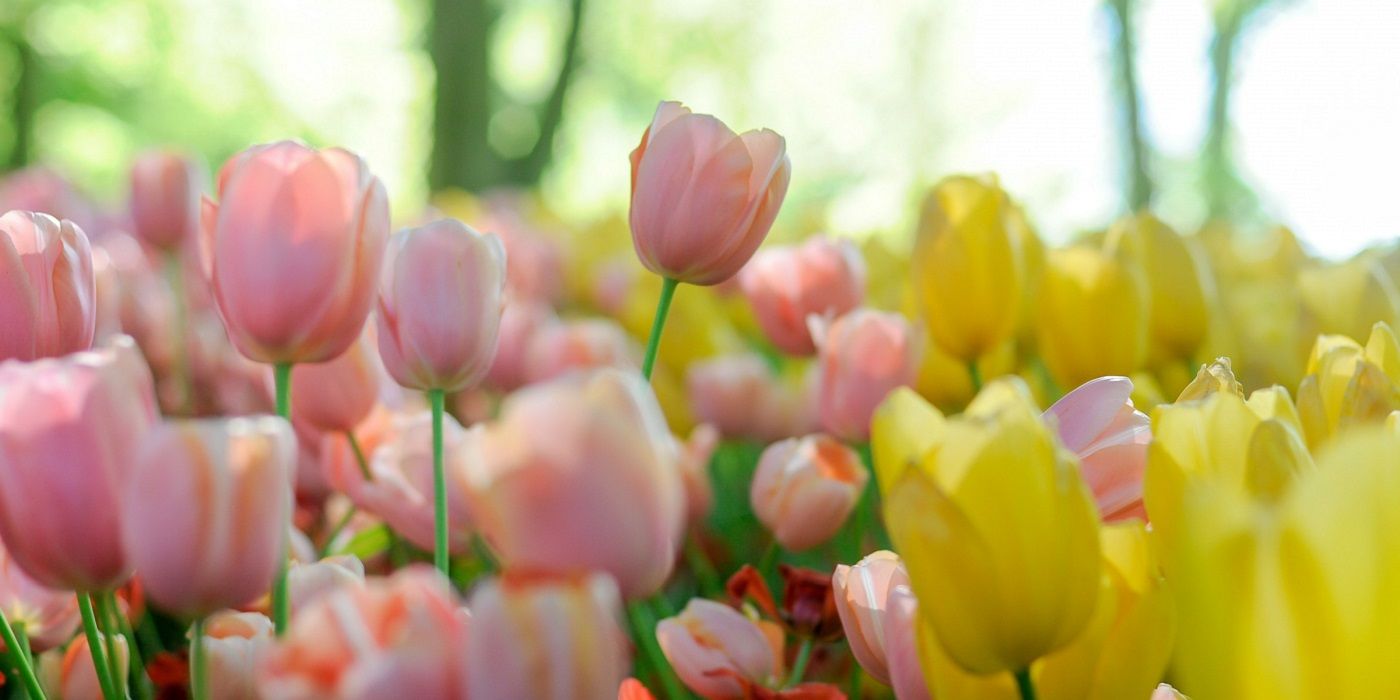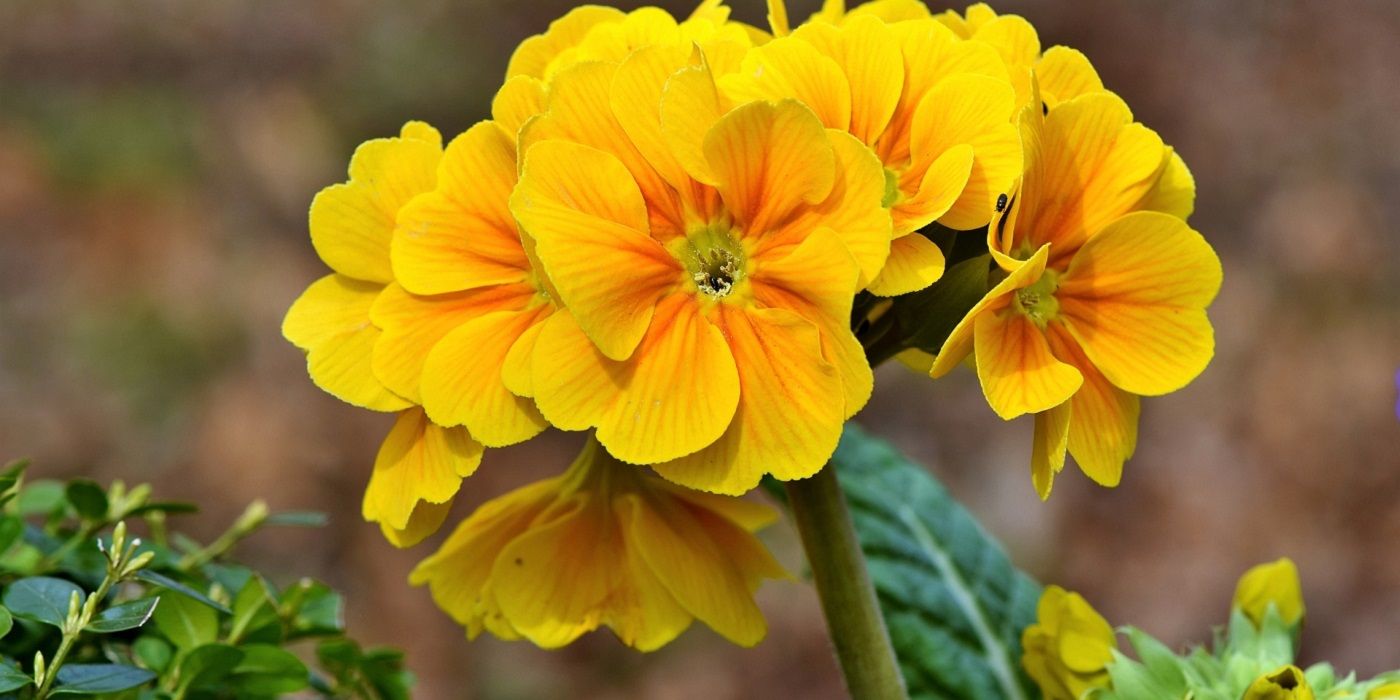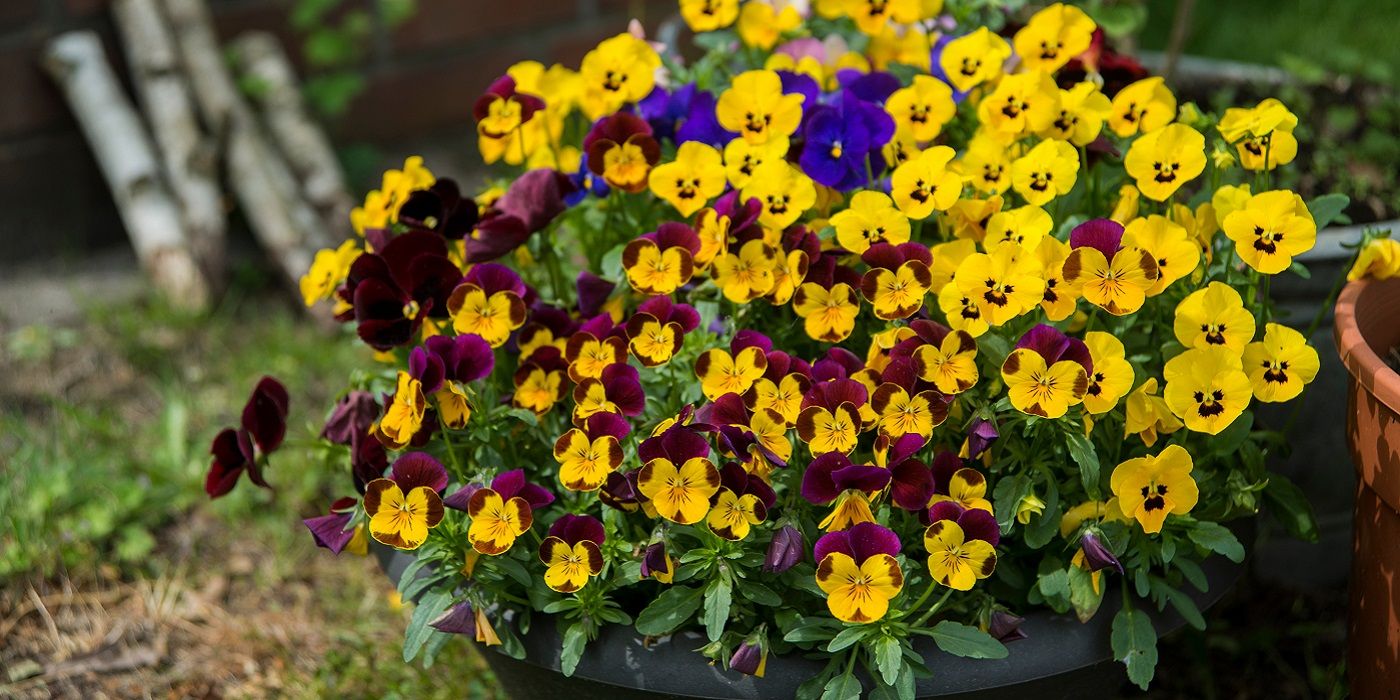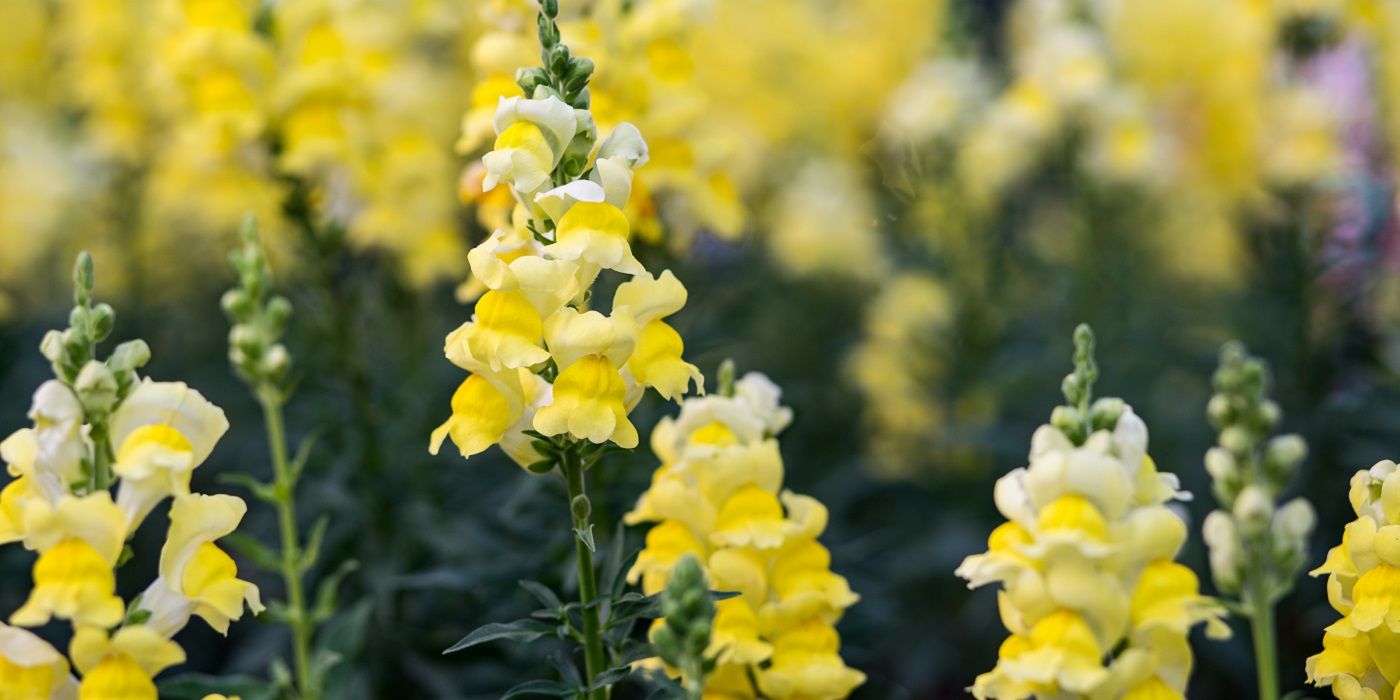Key Takeaways
- Daffodils bring pops of yellow to a spring landscape each year, symbolizing the season's arrival.
- Tulips in various hues, including the classic yellow, herald the arrival of spring and are perfect for cut flower arrangements.
- Common primrose bursts with bright, fragrant blooms in April, providing a lovely addition to garden beds, borders, and pots.
Lovely daffodils, pretty pansies, and tulips in all their glory transform garden areas into beautiful, eye-catching spaces. After the bleak days of winter and the shift to warmer weather, the season's first blooms are a welcome sight. For many, incorporating early spring flowers into the landscape is a must. The arrival of spring means it's time to get outside and garden again!
You don't have to hold out until summer to get beautiful flowers in the garden. If you want to have a stunning springtime show in your home garden that pays tribute to the sunshine, discover florals that bloom in shades of yellow and gold to create a stunning, vibrant space. Gardening awaits!
1 Daffodils Create a Golden Display
Early spring bloomers with rich colors
One of the first blooms to appear in spring, daffodils (Narcissus) bring bright pops of yellow to an emerging landscape. Their trumpet shape and slender foliage create a beautiful spring display.
Daffodils need to establish their root system before the cold weather's arrival to ensure a springtime bloom. Therefore, plant daffodil bulbs 3 to 6 inches deep in well-draining soil in mid-fall. Another option is to force the bulbs indoors, meaning you keep the bulbs in cold storage for 12 to 16 weeks indoors before planting outside.
Daffodils also bloom in shades of pink, white, and orange.
- Daffodils are early spring flowers that bloom as soon as March.
- The yellow flowers evoke the bright color of sunlight.
- The bulbs are naturally resistant to deer and rodents.
- Daffodils are hardy growers that withstand hot summer conditions well.
2 Tulips Are a Springtime Classic
The flower of spring is always a garden delight
Tulips (Tulipa) come in many colors, such as red, white, pink, salmon, and purple, but as yellow flowers, they are a classic that is linked to the spring season itself. For this reason, gardeners also enjoy using them as cut blooms in spring bouquets.
Like the daffodil, typical planting occurs in September or October, though it is possible to force these blooms indoors. When planting, use well-draining soil and plant the bulb 5 to 6 inches deep with the narrow end pointing upward.
Tulips bloom in late April after the bulbs come out of the necessary cold period of dormancy.
- Tulips withstand cold well and bloom in late winter. The first blossoms may even appear when snow is still on the ground!
- The distinct, cup-like shape of tulip blooms is instantly recognizable and adds a lot of interest and texture to the garden.
- Tulips are technically perennials, but centuries of creating different hybrids have changed the bulb's ability to return year after year, so these early spring flowers are usually treated like annuals.
- In warmer climates, such as hardiness zones 7 and higher, tulips prefer partial shade that protects them from the sun's heat.
3 Common Primrose Blooms Bright
There is nothing common about this burst of bright yellow
The common primrose (Primula vulgaris) is an herbaceous perennial flower that shows its lovely yellow flowers in April. The blooms come in color shades from pale yellow to creamy white and work well as borders, in pots, or in garden beds.
Primrose needs partial shade, well-draining soil, and consistent moisture to thrive. Purchase these perennials in late winter to get a head start on growth, then transplant them into the garden once the threat of frost passes to get spring blooms. Make sure to acclimatize common primrose, which means slowly introducing the plant to its new environment, over the next few days before planting. Do so by leaving the plant outside during the day for several hours and bringing it inside during the night for the first few days.
- Common primrose prefers cooler environments, so these spring flowers thrive in partial shade and moist soil. The plant does not like full sun, particularly in warmer climates.
- The blossoms are fragrant, making them a nice addition to outdoor spaces.
- Technically, primrose is a perennial herb! Historically, it has been used as a medicinal herb to cure pain.
- Primrose is edible! The leaves and blossoms can be consumed. The sweet blooms are used in baking and dessert treats, and the leaves can be used as salad greens.
4 Pansy Flowers in Bold Color Shades
Vivid yellow pansies make any garden livelier
Pansies (Viola tricolor var. hortensis) make a beautiful springtime show with multicolored and delicate-looking blooms. From deep hues of reds and purples to lighter pastels, the options for colors are plenty! Yellow pansies bloom in particularly stunning shades of color.
When designing your garden layout with yellow flowers of different kinds, plant pansies between spring bulbs like tulips. The duo provides a continuous show, as pansies bloom after the early spring flowers finish their display.
If you live in a northern climate with cooler summers, plant pansy seeds in July. Southern climates should wait until early August or late July to plant pansy seeds, which will become beautiful blooms in the following summer. Otherwise, buy pansies that are already blooming and add immediate color to your spring garden!
- Pansies attract butterflies, which bring more color and life to the garden.
- The blossoms are edible. Pansies are often used to garnish salads, cocktails, and desserts to add a pop of color and a slightly sweet flavor.
- Pansies can be garden flowers or groundcovers.
- Pansies are cold-hardy and will even survive a frost.
5 Snapdragon Blooms Add Soft Shades
Yellow snapdragons bloom in soft pastels
Snapdragon blooms (Antirrhinum) have stunning shapes and colors that appear in the spring. They provide height in garden layouts and work wonderfully in cut flower bouquets. Cutting the plant only encourages more growth, so snapdragons are a win-win!
If starting from seed indoors, do so about six to eight weeks before the last frost. However, you do not need to wait for the frost before planting snapdragons outdoors, as these annuals prefer cooler temperatures and can tolerate light frost.
- Snapdragons look beautiful as hanging basket plants, garden blooms, and cut blossoms.
- Blooms appear during spring and disappear in summer but if you keep the plants well-watered through the season, you may see new blossoms again in fall!
Spring Showtime in the Garden
Create a dazzling outdoor display in spring with the right early spring flowers. Shades of yellow and gold honor the golden rays of sunlight and make outdoor spaces feel bright and cheerful. Yellow flowers are the perfect thing to chase away the winter blues and step into a season of outdoor fun and sun!
|
Flower |
Ideal Environment |
Yellow Cultivars |
|
Common primrose (Primula vulgaris) |
Partial shade with moist but well-drained soil |
Primula veris 'Cowslip' |
|
Daffodils (Narcissus) |
Full sun and well-draining soil |
Narcissus 'Rapture' |
|
Pansies (Viola tricolor var. hortensis) |
Well-draining and organic-rich soil |
Viola wittrockiana Colossus 'Yellow' |
|
Snapdragon (Antirrhinum) |
Full sunlight and well-draining soil |
Antirrhinum majus 'Snapshot Yellow' |
|
Tulips (Tulipa) |
Full sun and well-draining soil |
Tulipa ‘Sun Gold’ |
Nothing is as exciting as witnessing the landscape return to life after the cold winter months, from the first pops of color that the daffodils and tulips provide to the unique blooms of the snapdragons in late spring. Planning your dream spring garden is easy with the right beautiful spring flowers! And with the right plants, you'll enjoy the color of sunshine all season long and into the summer, too.

